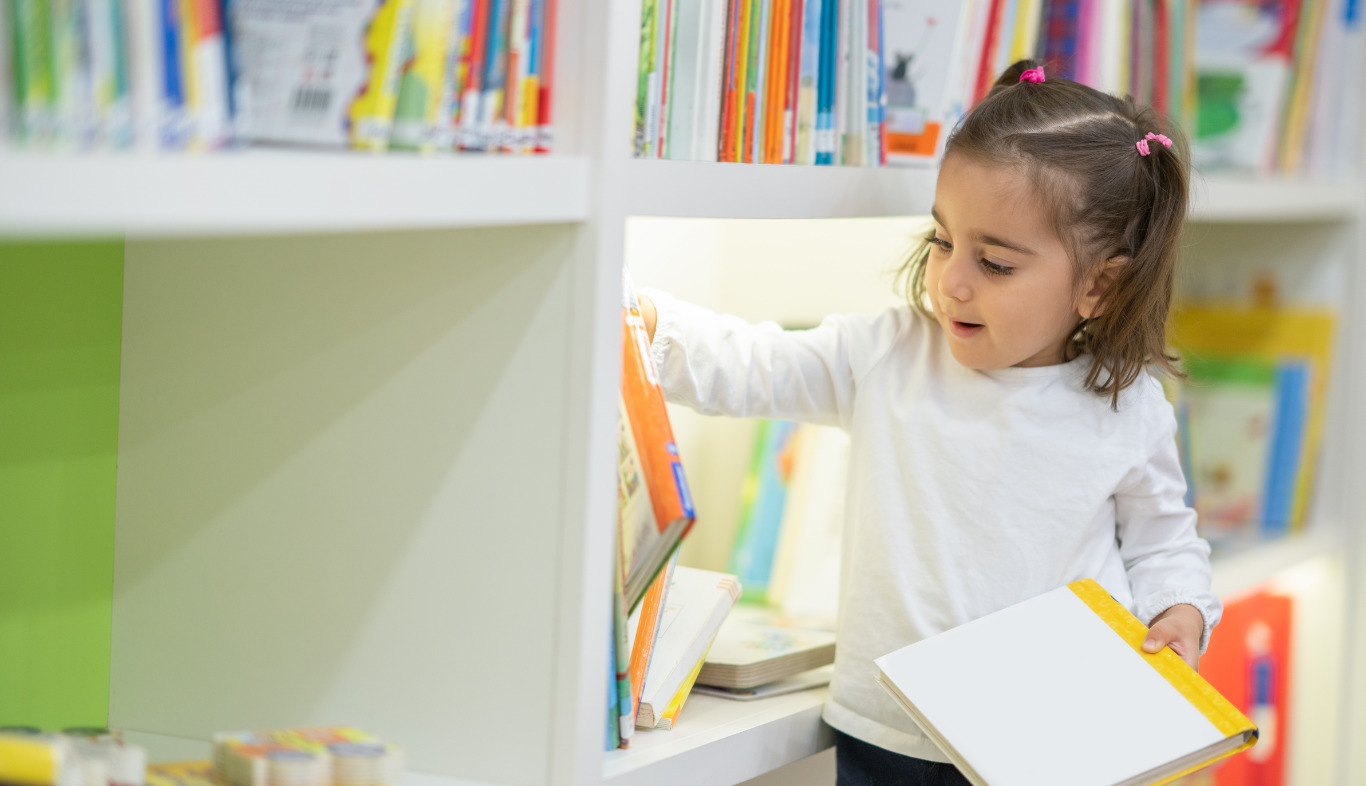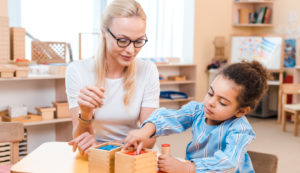Reading is an essential skill in everyone’s life. Not a single day or hour goes by when we are not reading something. It is also a factor that leads to the development of a country. For children, reading a book is actually a wealth of knowledge as they learn and explore the world around them. It is for this reason that books are such a prized resource in Montessori classrooms. Children need more exposure to books, even at home.
Many studies show that children with reading habits are more likely to develop lifelong literacy skills. One such study indicates that “reading books to very young children indeed contributes meaningfully to a favorable home literacy environment and supports children’s language development” (Nikal et al, 2016). Another research discusses that children’s engagement in recreational reading beyond independent skill acquisition is beneficial for continued literacy development (Merga and Mat Roni, 2018).
Children’s exposure to books is therefore an essential part of long-term cognitive development. Children also have greater reading rates, math skills, and higher intelligence. Just as we prepare our home for activities such as dressing, cooking, and sleeping, it is important for us to prepare the home environment for reading. Here are some recommendations for creating an enticing reading environment at home.
How to Set up a Reading Environment for Children in a Montessori Style?
The setup of a Montessori-inspired at-home library is neither difficult nor needs a large space, nor does it require major investment. Make sure your child’s home library follows the principles of a Prepared Environment.
Setting up a reading space helps children to sit down and concentrate on reading the book of their choice. Follow the 5 steps to set up an enticing reading environment at home:
-
- Child-accessible shelves: Similar to the Montessori environment, reading area shelves need to be easily accessible to the child. There are many variations of the bookshelves present in the market, but setting up a forward-facing bookshelf is the best as it allows children to choose the books to read and put them away back independently. Tip: The shelf doesn’t need to be expensive or large. It can be wooden shelves or wooden crates or wicker baskets. The idea is to make the books accessible to the child.
- Choosing the right books: Purchasing books should not be expensive too. Around 8-10 age-appropriate books are enough to keep on a bookshelf. For toddlers, books with a lot of illustrations and less text are good. For primary children, stories, grace, and courtesy books, books with counting and patterns, and more can be kept. As the child grows, you can provide more advanced books to help them with their exploration. Tip: You can start by adding books that interest children. Or Add books related to holidays such as Thanksgiving and Christmas. This way, it is easy to catch the interest of children and build a lifelong love for reading.
- Cozy seating area: Not only books and bookshelves, but the reading area should be cozy and inviting. Therefore, the next step is to make an enticing reading space by adding comfortable seating. Again, this need not be expensive; you can simply place a rug near the bookshelf or can create a reading corner with a comfortable chair or couch. The idea behind the dedicated reading area as it reduces the surrounding disturbance. It also helps children build interest and concentrate on what they are reading. Tip: If you have a smaller space, you can set up the bookshelf closer to the living room sofa. This helps in providing children with a comfortable space to read.
- Visual appeal: The child’s reading space should be visually appealing. Like Montessori classrooms, the environment should be calm, with neutral-colored walls. You can add a lamp, plants, motivational quotes, and pictures. These little details create a serene atmosphere that builds a child’s interest and attention. Tip: You can also set up the Montessori-inspired library next to the activity shelf, just in case the child wants to research the topic or problem.
- Calm environment and neutral colors: Montessori classrooms are based on the idea that the environment should not overwhelm children and create fewer distractions. Therefore, a children’s at-home library should be set up somewhere away from daily commotion. Avoid brightly colored walls, charts and paintings, and other distractions, so that children can concentrate and instill the habit of reading. Tip: To set up a Montessori-inspired room at home, read our blog here.
- Child-accessible shelves: Similar to the Montessori environment, reading area shelves need to be easily accessible to the child. There are many variations of the bookshelves present in the market, but setting up a forward-facing bookshelf is the best as it allows children to choose the books to read and put them away back independently. Tip: The shelf doesn’t need to be expensive or large. It can be wooden shelves or wooden crates or wicker baskets. The idea is to make the books accessible to the child.
Bottom Line
Montessori education is based on the idea that children should be free to explore and learn at their own pace. This means they are given the freedom to choose when, where, and how they learn. And a Montessori-inspired library at home is a great way to introduce children to the joy of reading. It is a new world for children to read, explore and learn. So let’s create a place at home where your child can focus on their interests and learn to be creative.
References
- Ahmad, Z. (2020). Parent’s role in promoting reading habits among children: An empirical examination. Library Philosophy and Practice. https://digitalcommons.unl.edu/libphilprac/3958
- Gökbulut, B., Yeniasır, M. (2018). Analysis of children’s interest in books and their reading levels depending on the education status of the family. Quality & Quantity 52 (Supplement 1), 235–245. https://doi.org/10.1007/s11135-017-0608-2.
- Merga, M. K., & Mat Roni, S. (2018). Children’s perceptions of the importance and value of reading. Australian Journal of Education, 62(2), 135–153. https://doi.org/10.1177/0004944118779615.
- Niklas, F., Cohrssen, C., & Tayler, C. (2016). The sooner, the better: Early reading to children. SAGE Open, 6(4). https://doi.org/10.1177/2158244016672715.
- Sikora, J., Evans, M. D. R., & Kelley, J. (2019). Scholarly culture: How books in adolescence enhance adult literacy, numeracy and technology skills in 31 societies. Social Science Research, 77, 1–15. https://doi.org/10.1016/j.ssresearch.2018.10.003.











